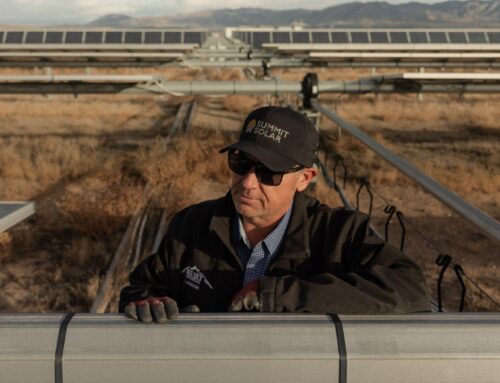Fort Drum selected as ‘optimal’ option for nuclear power
April 4, 2025
It’s been two years since the biomass plant on Fort Drum shut down. New York state removed forest scraps from its list of renewable energies, and therefore, the tax credits provided the company that operated it. Since then, the post has drawn power from the grid.
However, Fort Drum could soon be welcoming a new energy source — nuclear.
“Because of the security needs of Fort Drum, we do not want to be pulling off the grid,” Republican U.S. Rep. Claudia Tenney, whose district contains part of Fort Drum, said.
About 70 miles southwest of Fort Drum in Oswego sits Nine Mile Point’s Unit One. It is the oldest operating nuclear reactor in the country. It provides the area a “reliable baseload power” in the area that has extreme weather conditions like cold, Tenney said.
That crazy weather certainly reaches the gates of Fort Drum. It’s an installation that is continuing its efforts to reach Army goals — as it relates to renewable energy — which include self-sufficiency and less reliance on the grid. Nuclear power is becoming a top option.
“It provides emission-free power that we can keep safe and secure, much like the three nuclear power plants that are already on Lake Ontario,” Rep. Tenney added.
However, those large sites are now giving way to a new technology called small modular reactors. I some cases, they’re as big as a two-story garage.
The Army Corps of Engineers is recommending that set up for Fort Drum. Last October, Reps. Elise Stefanik and Tenney sent a letter to the secretary of the Army pushing for the military base to host a small reactor.
“The nuclear option is a great option to have a modular nuclear plant. The general at Fort Drum, he’s very much behind it,” Tenney said.
There are plenty of people out there who believe the excitement over this technology is unjustifed, believing it is less secure, less efficient, and could possibly produce more toxic waste and more expensive electricity. However, that’s not stopping New York state from getting behind the project as well.
“We hope that the grid is somewhat resilient, but it still does expose Fort Drum a little bit. This really is the solution,” state Assemblyman Scott Gray said.
It’s a technology that Gray not only believes could securely provide the energy needs of all of Fort Drum, but also serve as an eye-opener for big business. Think Amazon. Think Micron.
“What they’re looking for is something that can generate that kind of power. One that’s controllable to dispatchable, right? So, when they need it they need it and one that’s reliable,” Gray added.
With Fort Drum’s 10th Mountain Division still being the most deployed division in all of the Army, and Fort Drum soon welcoming in a brand new multi-domain task force and 1,500 soldiers with it, both Gray and Tenney believe now is the time.
“As the proud Representative of Fort Drum, I have long advocated for investments and innovations that enhance our military readiness and boost energy security and economic opportunity in the North Country.” Stefanik said. “In the fall, I was proud to advocate for the Army to host a small modular reactor at Fort Drum which is uniquely positioned to welcome a new energy source.”
Brian touched on this during that story, but organizations such as the National Resources Defense Council says these small reactors need to address concerns around environmental radiation, nuclear waste, costs and nuclear weapons proliferation.
It says minus those answers, the technology is unlikely to succeed.
Search
RECENT PRESS RELEASES
Related Post




